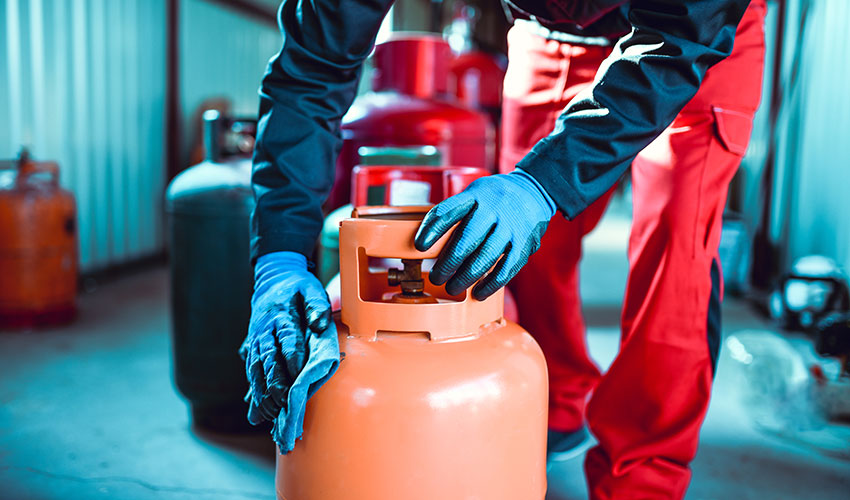6 steps to prepare your business facility for reopening

When circumstances or emergencies necessitate a business operations closure, like a manufacturing shutdown, it’s natural to be eager to restore normal business productivity as soon as possible.
But bringing systems back to production can be a high cost, high impact, and often a dangerous endeavor that requires strategic, and exceptionally coordinated efforts. Even in non-manufacturing operations (such as retail), returning employees can face safety risks from shut down boilers, dormant sprinkler systems, unseen fire hazards, and other similar hazards.
In order to minimise the risks to your staff and your assets, and to manage your exposures, it’s critical to plan carefully when resuming business operations. These steps can help you to come out of a shutdown safely.
-
Earmark and educate your team
Involve key senior management, environmental health and safety (EHS) staff, appropriate electricians, technicians, operations, process, and control staffs as necessary. Engage any required contractors and vendors.
Consider additional employee or vendor training, especially around safety or where people might be performing unfamiliar tasks. -
Develop a detailed project plan
Don’t leave anything to chance. Plan all the steps in advance, including assigning responsibilities, allocating the necessary resources, and establishing timing—and include contingencies for potential scope changes, emerging issues, and emergencies.
Establish communications protocols and regular check-ins to ensure the team members understand the procedures as well as their respective roles and responsibilities.

-
Keep safety top of mind
Restarting dormant building systems can present dangers from water, fire, toxic fumes, and other sources. Your teams should ensure the up-to-date and/or working status of:
- Safety guidelines and checklists, such as Pre-Start Up Safety Reviews (PSSRs) and process hazards analyses (PHAs).
- Necessary permits, including both existing permits and potential new ones.
- Mechanical drawings and photos - Have these ready, in the event of an equipment malfunction or process question.
- Compliance with applicable safety laws, such as WH&S and state regulations.
- Protective measures - Check not just fire protection and alarm systems, but also auxiliary equipment (like sump pumps or emergency batteries). Confirm that equipment safety devices are not bypassed; check for proper ventilation.
Staff should proactively identify:
- Potential hazards, such as toxic or flammable gas cannisters or wet spots. Plan for possibilities such as defective equipment, electrical dangers or faulty pipes.
- Exposures and liabilities - Should something go wrong, know what losses, damages and circumstances your insurance policies cover.
-
Ready the equipment and systems
While teams perform their assigned tasks, ensure they clearly document and transmit start up readiness information. Clearly determine and communicate what the “go” signal is for inspection and testing—and who will give it.
-
Inspect and test
Conduct initial inspections while equipment is still down and before any activity resumes. After the necessary specialists determine the equipment passes initial inspection, the next step would be to perform recommission testing to validate that the machinery functions properly when operating.
Have operations, maintenance, and vendors do a final inspection to evaluate equipment for normal service and ramp-up readiness. -
Ramp up and conduct a “post-mortem”
When your facility is successfully restarted and operations are ramped up to typical capacity, conduct a review of your processes. Update your EHS plans, checklists and any other documentation; record any lessons to reinforce the learnings. Consider implementing practices, acquiring systems or purchasing protections that would have proved useful to your restart effort.
This content is brought to you by Chubb Insurance Australia Limited (“Chubb”) as a convenience to readers and is not intended to constitute advice (professional or otherwise) or recommendations upon which a reader may rely. Any references to insurance cover are general in nature only and may not suit your particular circumstances. Chubb does not take into account your personal objectives, financial situation or needs and any insurance cover referred to is subject to the terms, conditions and exclusions set out in the relevant policy wording. Please obtain and read carefully the relevant insurance policy before deciding to acquire any insurance product. A policy wording can be obtained at www.chubb.com/au, through your broker or by contacting any of the Chubb offices. Chubb makes no warranty or guarantee about the accuracy, completeness, or adequacy of the content. Readers relying on any content do so at their own risk. It is the responsibility of the reader to evaluate the quality and accuracy of the content. Reference in this content (if any) to any specific commercial product, process, or service, and links from this content to other third party websites, do not constitute or imply an endorsement or recommendation by Chubb and shall not be used for advertising or service/product endorsement purposes. ©2020 Chubb Insurance Australia Limited ABN: 23 001 642 020 AFSL: 239687. Chubb®, its logos, and Chubb.Insured.SM are protected trademarks of Chubb.

Have questions?
Contact a broker today.